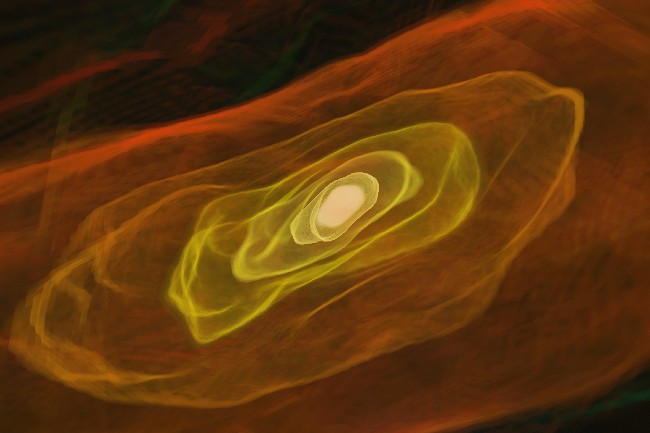
|
Credit & Copyright: Visualization:
Ralf Kaehler
(ZIB) &
Tom Abel
(Penn. State)
Simulation: Tom Abel (Penn. State), Greg Bryan (Oxford) & Mike Norman (UCSD)
Explanation:
What became of the first stars?
No known stars
appear to be composed of truly
primordial gas -- all of the stars around us have too many heavy elements.
Our own Sun
is thought to be a third generation star, with many second-generation
stars seen in globular clusters.
This year, however, significant progress is being made on solving
this perennial astronomical mystery.
Analyses of recent WMAP satellite images
of the cosmic microwave background indicate that this
primordial light was ionized by a first generation of stars that
came and went only 200 million years after the
Big Bang.
Additionally computer codes are now more-accurately tracking the
likely creation and evolution of
first stars in the early universe.
Pictured above at a scale of one
light-month, a computer-generated model resolves the scale of the first stars,
indicating clean cocoons that condensed into stars always
over 30 times the mass of our Sun.
Stars like this
quickly fused pristine gas into heavier elements and then exploded,
seeding the universe with
elements that would become part of
the stars we know and, ultimately,
ourselves.
Simulation: Tom Abel (Penn. State), Greg Bryan (Oxford) & Mike Norman (UCSD)
|
January February March April May June July August September October November December |
| |||||||||||||||||||||||||||||||||||||||||||||||||||||||
NASA Web Site Statements, Warnings, and Disclaimers
NASA Official: Jay Norris. Specific rights apply.
A service of: LHEA at NASA / GSFC
& Michigan Tech. U.
Based on Astronomy Picture
Of the Day
Publications with keywords: stars - Population III
Publications with words: stars - Population III
See also:
